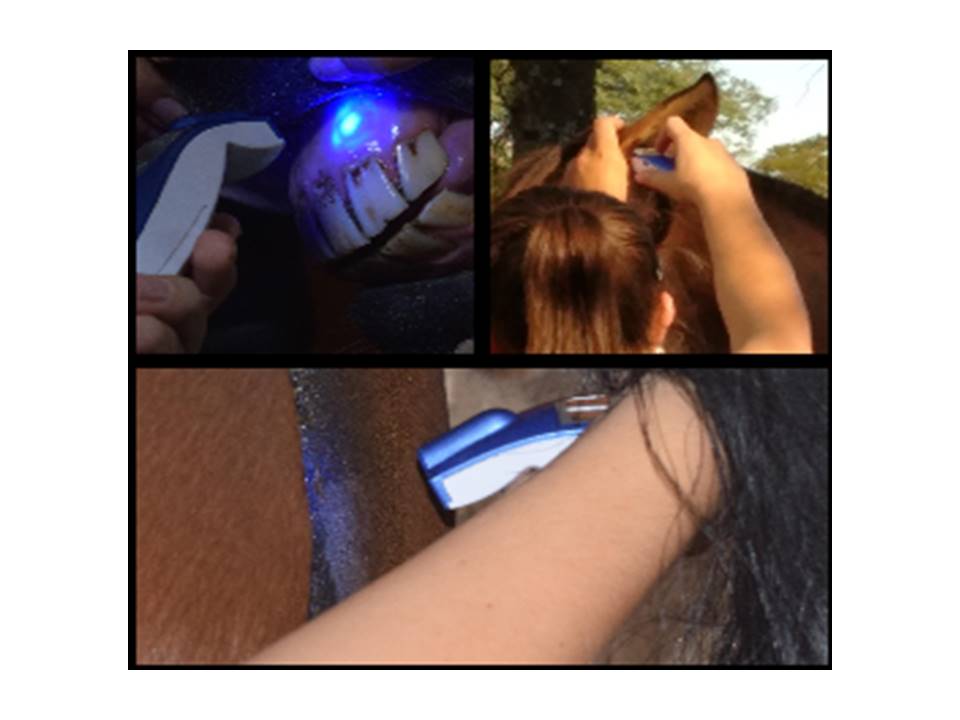Gaining body temperature in horses: mercury, digital and infrared thermometer in different locations
DOI:
https://doi.org/10.21708/avb.2021.15.1.9833Resumo
The physical examination has several stages, one of which is the measurement of body temperature, when it exceeds the physiological values is indicative of some disease or hyperthermia, for this in veterinary medicine the mercury or digital thermometer is commonly used. The objective of this work is to compare if there is a difference between the mercury thermometer and the infrared thermometer or digital thermometer, as well as to identify if there is a difference between the measurement locations with the infrared thermometer and the mercury column thermometer and digital thermometer. Infrared temperature was evaluated in three places: oral mucosa, pinna and anal or vaginal mucosa (females), then a digital thermometer, followed by mercury, which was used as a reference standard. There was a statistical difference between the mercury thermometer and the infrared thermometer, when measured on the anal or vaginal mucosa and on the oral mucosa. The infrared thermometer, in the ear, and the digital thermometer did not differ from the mercury thermometer, demonstrating that these present similar values during the temperature measurement. The infrared thermometer proved to be little invasive and fast when compared to the others. However, some limitations were observed in the measurement of body temperature with the infrared thermometer measured in the ear. It is concluded that the infrared thermometer, used in the ear, and the digital thermometer are equivalent to the mercury thermometer and can be used in horses, however, more studies on this topic are still needed.
Downloads

Downloads
Publicado
Edição
Seção
Licença
Autores que publicam na Acta Veterinaria Brasilica concordam com os seguintes termos: a) Autores mantém os direitos autorais e concedem à revista o direito de primeira publicação, com o trabalho simultaneamente licenciado sob a Licença Creative Commons Attribution que permite o compartilhamento do trabalho com reconhecimento da autoria e publicação inicial nesta revista. b) Autores têm autorização para assumir contratos adicionais separadamente, para distribuição não-exclusiva da versão do trabalho publicada nesta revista (ex.: publicar em repositório institucional ou como capítulo de livro), com reconhecimento de autoria e publicação inicial nesta revista. c) Autores têm permissão e são estimulados a publicar e distribuir seu trabalho online (ex.: em repositórios institucionais ou na sua página pessoal) a qualquer ponto antes ou durante o processo editorial, já que isso pode gerar alterações produtivas, bem como aumentar o impacto e a citação do trabalho publicado (Veja O Efeito do Acesso Livre).


 Esta obra está licenciada com uma Licença
Esta obra está licenciada com uma Licença 